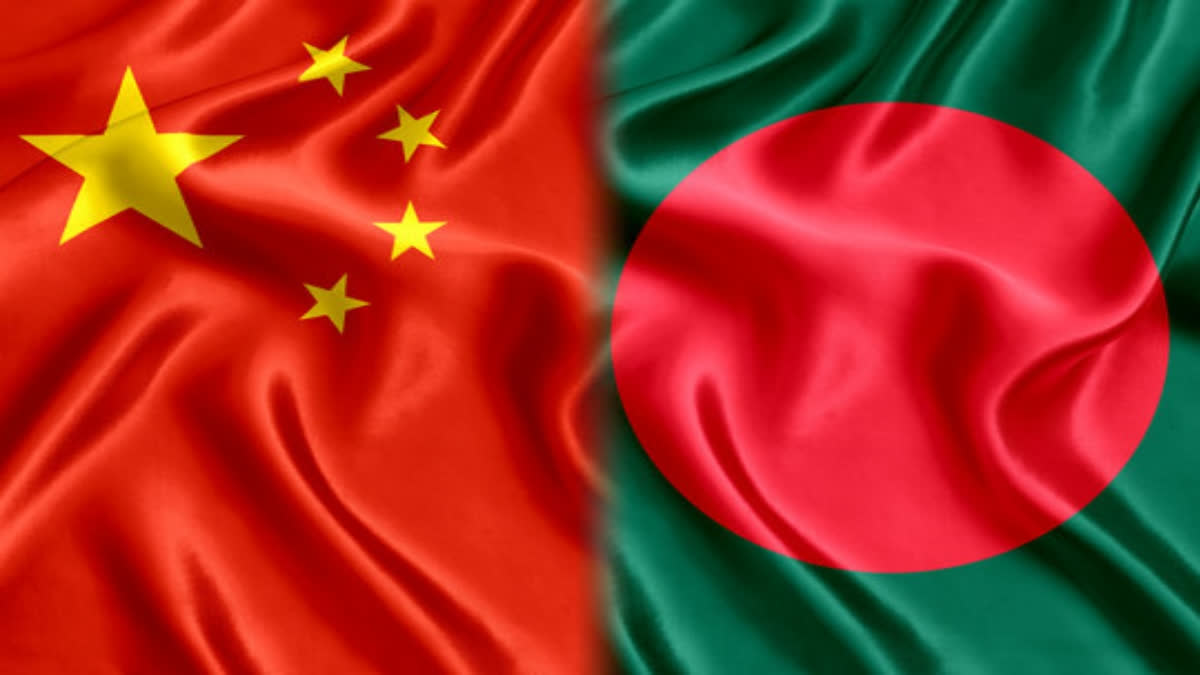New Delhi: China is further expanding its influence in the South Asia region with a Chinese company committing a big investment for setting up a factory in the Mongla Export Processing Zone (EPZ) in Bangladesh.
According to a statement issued by the Bangladesh Export Processing Zones Authority (BEPZA), Chinese company Yun Sheng BD is going to establish a composite (textile, garments and accessories) industry in the Mongla EPZ.
“This would be the first such kind of factory in Mongla EPZ,” the BEPZA statement read. “Yun Sheng BD will invest $89 million to produce fabrics, garments and garments accessories items. It would be the highest amount of proposed investment ever from a single company signed agreements to establish factories in Mongla EPZ.”
The Chinese company will produce woven and knitted fabrics, padding, quilting, printing fabrics, embroidered fabrics, coated fabrics, laminated fabrics, all kinds of tape, knit and woven garments products etc. The company will create employment opportunities for 5,421 Bangladesh nationals.
Mongla EPZ is one of the eight export processing zones under the BEPZA. It is located in Mongla and is adjacent to the Mongla Port which is of strategic interest for India in the Bay of Bengal region.
The opening of the Padma Bridge in June last year by Bangladesh Prime Minister Sheikh Hasina has transformed Mongla EPZ as one of the best investment destinations to foreign and local investors, according to BEPZA. The 6.15-km-long Padma Multipurpose Bridge, commonly known as the Padma Bridge, is a two-level road-rail bridge across the Padma River, the main distributary of the Ganga in Bangladesh. It connects Louhajang Upazila of Munshiganj and Zazira Upazila of Shariatpur and a small part of Shibchar Upazila of Madaripur, linking the less developed southwest of the country to the northern and eastern regions.
“Once lagging behind the other seven EPZs of the country, Mongla EPZ has attracted investment of $61 million, double the set target, in the just-ended fiscal year 2022-23,” BEPZA further stated. “BEPZA signed lease agreements with five companies, including Yun Sheng BD, with a proposed investment of $142.7 million to invest in Mongla EPZ after the opening of the Padma Bridge.”
But the reason the latest Chinese investment in Bangladesh will be a cause of concern for New Delhi is that it is yet another manifestation of Beijing’s growing influence in India’s strategic neighbourhood. An additional cause of concern is that the new factory will come up close to the Mongla Port.
The Mongla Port is the second largest and second busiest seaport of Bangladesh located at Mongla Upazila, Khulna Division. It is situated in the southwestern part of the country at the confluence of Possur River and Mongla Nulla approximately 71 nautical miles upstream of the Bay of Bengal. The port provides facilities and services to the international shipping lines and other concerned agencies providing shore-based facilities like jetties, godowns, cargo handling equipment and maintaining adequate water depth in the channel as well as making provision for safe day and night shipping. Mongla is also a gateway for tourist ships travelling to the largest mangrove forest in the world, the Sunderbans.
The Mongla Port has been an important factor in India’s strategic interests in the Bay of Bengal region. It serves as a vital gateway for India to access the Bay of Bengal and enhance maritime trade connectivity. It provides an alternative route for trade, reducing dependence on other congested ports in the region. Improved connectivity through Mongla Port facilitates the movement of goods between India and Bangladesh, as well as other countries in the region.
The port is strategically located near the Sundarbans, the largest mangrove forest in the world. This location enhances India's strategic presence and surveillance capabilities in the Bay of Bengal region. A stable and secure Bay of Bengal is crucial for the overall security and stability of the region. By having interests in Mongla Port, India aims to contribute to regional stability and security. The Bay of Bengal region is marked by geopolitical dynamics involving major powers.
India is part of the Quad that also comprises the US, Japan and Australia, which is working for a free and open Indo-Pacific in the face of China’s hegemony in the region. The Indo-Pacific is a region that stretches from the east coast of Japan to the east coast of Africa and the Bay of Bengal is right at the centre of it.
So, what are the implications of this large Chinese investment in Bangladesh for India? “Bangladesh has always been under the influence of Bangladesh,” Anand Kumar, Associate Fellow at the Manohar Parrikar Institute of Defence Studies and Analyses and author of the books Emerging Challenges and Opportunities in Indo-Bangladesh Relations and Bangladesh and Its Security Relationship with External Powers, told ETV Bharat. “The new investment will further increase the influence of China in Bangladesh.”
Given that the presence of the Chinese is increasing near a strategic port, what does it mean for India? “Bangladesh has made the EPZ close to the port, so the Chinese are coming in large numbers,” Kumar said. “What this will do is increase the competition for influence (between India and China) in Bangladesh.”
Also read:



